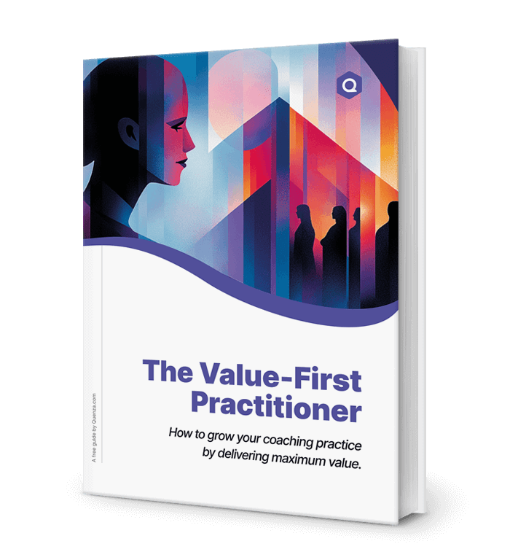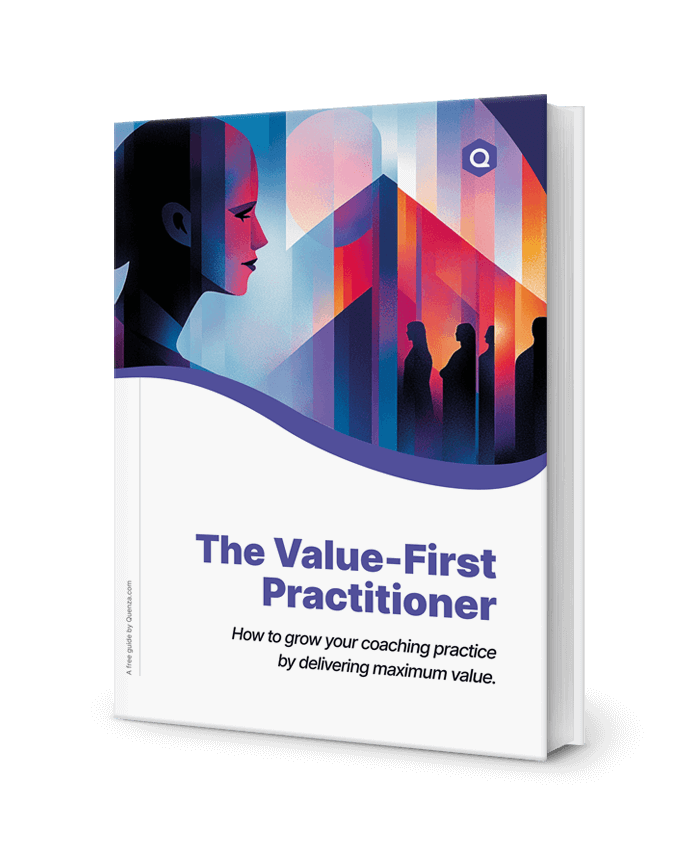Anxiety is a pervasive mental health condition affecting millions worldwide, significantly impacting daily life and overall well-being. While traditional treatments like medication and talk therapy are common, alternative approaches are gaining recognition for their effectiveness. One such method is play therapy, a unique and powerful tool in addressing anxiety, particularly in children but also beneficial for adolescents and adults [1].
Play therapy offers a non-threatening, natural way for individuals to express their emotions, work through their anxieties, and develop coping strategies. This approach is particularly valuable for those who struggle to articulate their feelings verbally, providing a safe space for emotional exploration and growth.
The prevalence of anxiety disorders has been on the rise, especially in recent years. According to the World Health Organization, anxiety disorders are the most common mental health conditions globally, affecting an estimated 264 million people [2]. This increasing prevalence underscores the importance of exploring diverse and effective treatment options like play therapy.
In this blog post, we will delve into the world of play therapy, examining its principles, benefits for anxiety treatment, and how it works to promote healing and emotional growth. We’ll explore the key techniques used in play therapy and discuss how this approach can be adapted for different age groups. By understanding the potential of play therapy, we can open new avenues for anxiety treatment and support individuals in their journey towards better mental health.
Understanding Play Therapy
Play therapy is a structured, theoretically based approach to therapy that builds on the natural way children learn about themselves and their relationships in the world around them [3]. At its core, play therapy recognizes that play is the language of children and provides a means for them to express their experiences and feelings through a natural, self-guided, self-healing process.
While traditional therapy approaches often rely heavily on verbal communication, play therapy differs by utilizing the power of play to help individuals, especially children, communicate and resolve their issues. This approach is particularly effective for those who may struggle to articulate their feelings and experiences verbally.
Play therapists create a safe, supportive environment where clients can freely explore their emotions, experiences, and behaviors through play. This process allows individuals to develop greater self-awareness, learn new coping skills, and work through their anxieties in a non-threatening manner [4].
The theoretical foundations of play therapy draw from various psychological perspectives, including psychoanalytic, humanistic, and cognitive-behavioral approaches. This integration allows play therapists to tailor their techniques to the unique needs of each client, addressing anxiety and other mental health concerns in a holistic manner.
Research has shown that play therapy can be effective in treating a wide range of issues, including anxiety disorders. A meta-analysis of 93 controlled outcome studies demonstrated that the effects of play therapy are more positive for children when a parent is actively involved in the child’s treatment [5]. This highlights the importance of family involvement in the therapeutic process, especially when dealing with anxiety in children.
The Benefits of Play Therapy for Anxiety
Play therapy offers numerous benefits for individuals struggling with anxiety. One of the primary advantages is its ability to facilitate emotional expression through play. Many people, especially children, find it challenging to verbalize their anxieties and fears. Through play, they can symbolically represent their emotions and experiences, making them more tangible and easier to process [6].
Another significant benefit is the development of coping skills and resilience. As individuals engage in play therapy, they have the opportunity to practice problem-solving, decision-making, and emotional regulation in a safe, controlled environment. This practice helps build confidence and equips them with valuable tools to manage their anxiety in real-life situations [7].
Play therapy also creates a safe and supportive environment that is crucial for individuals dealing with anxiety. The non-judgmental, accepting atmosphere fostered by play therapists allows clients to feel comfortable exploring their fears and anxieties without the pressure of direct confrontation. This supportive setting promotes trust and helps individuals feel more at ease in expressing themselves and working through their challenges.
Research has shown that play therapy can lead to significant improvements in anxiety symptoms. A study examining the effects of child-centered play therapy on children with anxiety found that participants showed a significant decrease in anxiety symptoms and an increase in positive behaviors [8]. This demonstrates the potential of play therapy as an effective intervention for anxiety disorders.
Moreover, play therapy can enhance self-esteem and self-efficacy, which are often compromised in individuals with anxiety. By providing opportunities for mastery experiences through play, clients can develop a stronger sense of self and greater confidence in their ability to cope with anxiety-provoking situations.
Key Techniques in Play Therapy for Anxiety
Play therapy encompasses a variety of techniques tailored to address anxiety effectively. Three key techniques often employed in play therapy for anxiety are art therapy, sand tray therapy, and role-play and puppetry.
Art therapy involves using various art materials and creative processes to explore emotions and experiences related to anxiety. Through drawing, painting, or sculpting, individuals can externalize their internal experiences, making them more tangible and easier to process. Art therapy can be particularly effective in helping clients identify and express their anxiety triggers, as well as develop visual coping strategies [9].
Sand tray therapy utilizes a tray filled with sand and miniature objects to create scenes or narratives. This technique provides a contained space for individuals to explore their anxieties and work through challenging situations symbolically. By manipulating the sand and objects, clients can gain a sense of control over their anxiety and develop new perspectives on their experiences [10].
Role-play and puppetry allow individuals to act out anxiety-provoking scenarios in a safe, controlled environment. By taking on different roles or using puppets, clients can practice coping strategies, develop problem-solving skills, and build confidence in managing anxiety-inducing situations. This technique is particularly useful for children who may find it easier to express themselves through characters or puppets rather than directly [11].
In addition to these techniques, play therapists may incorporate other methods such as storytelling, music therapy, and movement therapy. The choice of technique often depends on the client’s age, preferences, and specific anxiety symptoms. For instance, a study on the use of music therapy in conjunction with play therapy found significant reductions in anxiety levels among hospitalized children [12].
By employing a diverse range of techniques, play therapists can create a tailored approach that addresses the unique needs of each individual struggling with anxiety. This flexibility allows for a more comprehensive and effective treatment strategy, helping clients develop the skills and confidence needed to manage their anxiety in various life situations.
| Technique | Description | Benefits for Anxiety |
|---|---|---|
| Sand Tray Therapy | Using a sandbox and miniature figures to create scenes | Provides a safe space to explore and express anxious feelings |
| Art Therapy | Using various art materials for creative expression | Helps externalize and process anxiety-related emotions |
| Puppetry | Using puppets to act out scenarios | Allows practice of coping strategies in a non-threatening way |
How Play Therapy Works for Different Age Groups
Play therapy is a versatile approach that can be adapted to suit the needs of various age groups, from young children to adults. While the core principles remain the same, the techniques and materials used may vary to ensure age-appropriateness and effectiveness.
For children, play therapy often involves the use of toys, art materials, and games to facilitate expression and exploration of emotions. Young children, who may lack the verbal skills to articulate their anxieties, can benefit greatly from this non-verbal approach. Research has shown that play therapy can significantly reduce anxiety symptoms in children [8].
Adolescents may engage in more structured play activities or creative arts therapies that align with their interests and developmental stage. For instance, music therapy or drama therapy can be particularly effective for teenagers struggling with anxiety [13].
For adults, play therapy might incorporate more sophisticated forms of creative expression, such as sand tray therapy or art therapy. These techniques can help adults access and process emotions that may be difficult to verbalize. A study on adult play therapy found it to be effective in reducing anxiety and improving overall well-being [14].
| Age Group | Play Therapy Approach | Example Activities |
|---|---|---|
| Young Children (3-7) | Child-Centered Play Therapy | Free play with toys, drawing, storytelling |
| Older Children (8-12) | Directive Play Therapy | Board games, role-playing, art projects |
| Adolescents (13-17) | Creative Arts Therapy | Music therapy, drama therapy, journaling |
| Adults | Expressive Arts Therapy | Sand tray therapy, mindfulness coloring, guided imagery |
Integrating Play Therapy with Other Approaches
Play therapy can be effectively integrated with other therapeutic approaches to create a comprehensive treatment plan for anxiety. This integration can enhance the overall effectiveness of therapy and provide a more holistic approach to mental health care.
One common integration is with Cognitive-Behavioral Therapy (CBT). Play therapy techniques can be used to make CBT concepts more accessible and engaging, especially for younger clients. For example, using puppets to role-play different thought patterns can help children understand and challenge anxious thoughts [15].
Mindfulness-based techniques can also be incorporated into play therapy sessions. Activities like mindful coloring or guided imagery can help individuals develop present-moment awareness and relaxation skills, which are crucial for managing anxiety [16].
Family therapy principles can be integrated into play therapy, especially when working with children. Involving family members in play sessions can improve communication, strengthen relationships, and create a supportive environment for managing anxiety [17].
The Role of Creativity in Anxiety Treatment
Creativity plays a crucial role in play therapy for anxiety, offering a unique pathway for emotional expression and problem-solving. Creative activities engage different parts of the brain, potentially bypassing the cognitive barriers that often accompany anxiety disorders.
Through creative expression, individuals can externalize their internal experiences, making abstract feelings more concrete and manageable. This process can lead to new insights and perspectives on anxiety-provoking situations [18].
Research has shown that creative activities can reduce stress and anxiety by promoting relaxation and mindfulness. A study on the effects of art-making on stress-related outcomes found that even brief creative sessions can significantly reduce anxiety levels [19].
Moreover, creativity in play therapy can help individuals develop new coping strategies and problem-solving skills. By engaging in creative play, clients can explore different scenarios and solutions in a safe, non-threatening environment, building confidence in their ability to manage anxiety-provoking situations.
Finding a Qualified Play Therapist
When seeking a play therapist for anxiety treatment, it’s essential to find a qualified professional with appropriate training and experience. Look for therapists who are registered play therapists (RPT) or registered play therapist-supervisors (RPT-S), as these credentials indicate specialized training in play therapy techniques [20].
Consider the therapist’s experience in treating anxiety specifically, as well as their approach to play therapy. Some therapists may specialize in certain age groups or use particular techniques that might be more suitable for your needs.
When evaluating potential therapists, don’t hesitate to ask questions about their training, experience, and approach to play therapy for anxiety. Inquire about their treatment philosophy, the types of techniques they use, and how they measure progress in therapy.
It’s also important to consider practical factors such as location, availability, and cost. Many therapists offer initial consultations, which can be an excellent opportunity to assess whether you feel comfortable with them and their approach.
Conclusion
Play therapy offers a unique and powerful approach to treating anxiety, harnessing the natural healing potential of play and creativity. By providing a safe, supportive environment for emotional expression and exploration, play therapy can help individuals of all ages develop effective coping strategies and build resilience in the face of anxiety.
The integration of play therapy with other therapeutic approaches, such as CBT and mindfulness-based techniques, can create a comprehensive treatment plan tailored to individual needs. The role of creativity in this process cannot be overstated, offering new pathways for understanding and managing anxiety.
As research continues to demonstrate the effectiveness of play therapy for anxiety [21], it’s clear that this approach holds great promise for those struggling with anxiety disorders.
If you or someone you know is dealing with anxiety, consider exploring play therapy as a treatment option. By finding a qualified play therapist and embracing the healing power of play, you can embark on a journey towards better mental health and improved quality of life.
Frequently Asked Questions
The duration of play therapy and the time it takes to see results can vary depending on the individual’s needs, age, and the severity of their anxiety. Some individuals may experience noticeable improvements within 6-8 sessions, while others may require longer-term therapy. Generally, short-term play therapy interventions (12-16 sessions) have shown positive results for many children with anxiety. However, it’s important to remember that progress is individual, and your play therapist will work with you to establish realistic goals and timelines.
While play therapy is often associated with children, it can be equally effective for adults dealing with anxiety. For adults, play therapy may take different forms, such as expressive arts therapy, sand tray therapy, or other creative interventions. These approaches can help adults access and process emotions that may be difficult to verbalize, providing a unique avenue for self-expression and healing. Adult play therapy can be particularly beneficial for those who find traditional talk therapy challenging or those who have experienced trauma.
Play therapy and CBT are both effective approaches for treating anxiety, but they differ in their methods and focus. CBT primarily targets thought patterns and behaviors, teaching individuals to identify and challenge anxious thoughts. Play therapy, on the other hand, uses play and creative expression as a means of communication and healing. It allows individuals, especially children, to express and work through their anxieties in a more indirect, non-verbal manner. While CBT is more structured and goal-oriented, play therapy provides a flexible, client-led approach that can be particularly beneficial for those who struggle with verbal expression or find direct confrontation of their anxieties overwhelming.
While play therapy is generally considered safe and effective, there are a few potential limitations to consider. Some individuals, particularly older adolescents or adults, may initially feel self-conscious about engaging in play-based activities. Additionally, play therapy may not be as structured as other forms of therapy, which some clients might find challenging. It’s also important to note that play therapy requires a significant time commitment and may not provide immediate results, which can be frustrating for some. Lastly, the effectiveness of play therapy largely depends on the skill of the therapist and the client’s willingness to engage in the process.
Parents and caregivers play a crucial role in supporting the play therapy process. They can create a supportive environment at home by setting aside regular playtime with their child, free from distractions. It’s important to follow the child’s lead during play and avoid directing or judging their actions. Parents can also practice active listening and reflection techniques learned from the therapist. Additionally, maintaining open communication with the play therapist and following their recommendations for home activities can greatly enhance the therapy’s effectiveness. Remember, consistency and patience are key in supporting your child’s therapeutic journey.
References
- ^ Schaefer, C. E., & Drewes, A. A. (2014). The therapeutic powers of play: 20 core agents of change. John Wiley & Sons.
- ^ World Health Organization. (2017). Depression and Other Common Mental Disorders: Global Health Estimates. World Health Organization. https://apps.who.int/iris/handle/10665/254610
- ^ Landreth, G. L. (2012). Play therapy: The art of the relationship. Routledge.
- ^ Bratton, S. C., Ray, D., Rhine, T., & Jones, L. (2005). The efficacy of play therapy with children: A meta-analytic review of treatment outcomes. Professional Psychology: Research and Practice, 36(4), 376–390. https://doi.org/10.1037/0735-7028.36.4.376
- ^ Lin, Y. W., & Bratton, S. C. (2015). A meta-analytic review of child-centered play therapy approaches. Journal of Counseling & Development, 93(1), 45-58. https://doi.org/10.1002/j.1556-6676.2015.00180.x
- ^ Baggerly, J. N., Ray, D. C., & Bratton, S. C. (2010). Child-centered play therapy research: The evidence base for effective practice. John Wiley & Sons.
- ^ Shen, Y. J. (2002). Short-term group play therapy with Chinese earthquake victims: Effects on anxiety, depression and adjustment. International Journal of Play Therapy, 11(1), 43–63. https://doi.org/10.1037/h0088856
- ^ Stulmaker, H. L., & Ray, D. C. (2015). Child-centered play therapy with young children who are anxious: A controlled trial. Children and Youth Services Review, 57, 127-133. https://doi.org/10.1016/j.childyouth.2015.08.005
- ^ Pifalo, T. (2007). Jogging the cogs: Trauma-focused art therapy and cognitive behavioral therapy with sexually abused children. Art Therapy, 24(4), 170–175. https://doi.org/10.1080/07421656.2007.10129471
- ^ Homeyer, L. E., & Sweeney, D. S. (2011). Sandtray therapy: A practical manual. Routledge.
- ^ Kottman, T., & Meany-Walen, K. K. (2018). Partners in play: An Adlerian approach to play therapy. American Counseling Association.
- ^ Ortiz, G. D., O'Connor, T., Carey, J., Vella, A., Paul, A., Rode, D., & Weinberg, A. (2019). Impact of a combined music and play therapy intervention on pain and anxiety in hospitalized children. Hospital Pediatrics, 9(12), 969-976. https://doi.org/10.1542/hpeds.2019-0053
- ^ Goldbeck, L., & Ellerkamp, T. (2012). A randomized controlled trial of multimodal music therapy for children with anxiety disorders. Journal of Music Therapy, 49(4), 395-413. https://doi.org/10.1093/jmt/49.4.395
- ^ Shahidi, L., Hemmati, S., Mohamadpour, S., & Keshavarzi, F. (2021). Effectiveness of play therapy on anxiety and quality of life in adult women with generalized anxiety disorder. Journal of Clinical Psychology, 12(4), 31-42. https://doi.org/10.22075/jcp.2021.21549.1950
- ^ Knell, S. M. (2015). Cognitive-behavioral play therapy. In K. J. O'Connor, C. E. Schaefer, & L. D. Braverman (Eds.), Handbook of play therapy (pp. 119-133). John Wiley & Sons, Inc.
- ^ Coholic, D. A., & Eys, M. (2016). Benefits of an arts-based mindfulness group intervention for vulnerable children. Child and Adolescent Social Work Journal, 33(1), 1-13. https://doi.org/10.1007/s10560-015-0431-3
- ^ Bratton, S., & Landreth, G. (2006). Child parent relationship therapy (CPRT) treatment manual: A 10-session filial therapy model for training parents. Routledge.
- ^ Malchiodi, C. A. (2020). Trauma and expressive arts therapy: Brain, body, and imagination in the healing process. Guilford Publications.
- ^ Kaimal, G., Ray, K., & Muniz, J. (2016). Reduction of cortisol levels and participants' responses following art making. Art Therapy, 33(2), 74-80. https://doi.org/10.1080/07421656.2016.1166832
- ^ Association for Play Therapy. (2020). Credentials overview. Association for Play Therapy. https://www.a4pt.org/page/CredentialsOverview
- ^ Meany-Walen, K. K., & Teeling, S. (2016). Adlerian play therapy with students with externalizing behaviors and poor social skills. International Journal of Play Therapy, 25(2), 64-77. https://doi.org/10.1037/pla0000022



